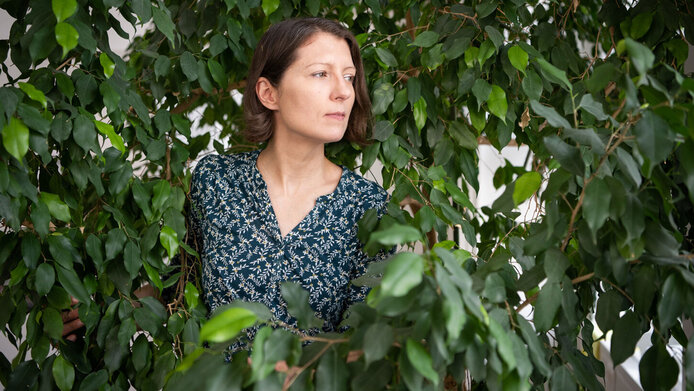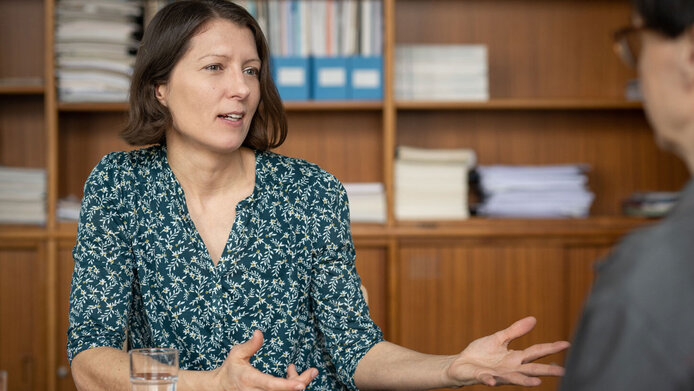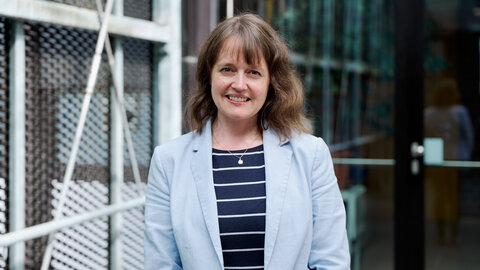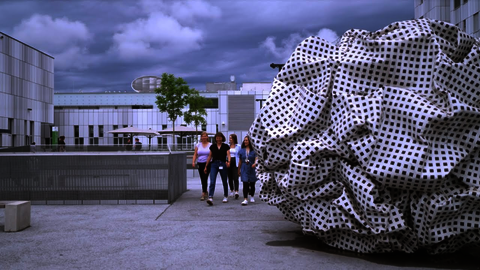“Go into the forest, come out healthier”

“Dr. FOREST: Forest Diversity and Health” is a Europe-wide project involving researchers from Austria, Germany, Belgium, Poland and France. The core question of the project centers on the positive impact on human health and well-being of species-rich forests in contrast to monocultures. The researchers conduct case studies in the forest to investigate the influence on people's recreation and health of factors such as sounds, colors, air quality or the wealth of plants found in a mixed forest. The project also involves stakeholders from forestry, nature conservation, tourism and the health sector. The environmental physician Daniela Haluza is the deputy director of “Dr. FOREST” (2020–2023). On the occasion of the International Forest Day on March 21, scilog interviewed this medical specialist and researcher on the medical benefits of contact with nature.
Research has furnished ample evidence of what we sense intuitively: outdoor exercise in nature has a positive effect on our well-being. What new insights do you expect the “Dr. FOREST” project to provide?
Daniela Haluza: This Europe-wide project involves teams of researchers who are exploring the impact on human health of tree diversity. Hence the focus is on species-rich forests as markers of biodiversity and health. I think that the biodiversity crisis will soon become more important than the climate crisis, because one causes the other and humankind is directly threatened by the irretrievable loss of species. The pandemic has given us an unexpected surge of forest and nature research. Many people have now started to spend more time outdoors. Cell phone tracking has shown that people have walked more and farther distances than before the pandemic. This phenomenon has come to stay, as the timespan has been long enough for a behavioral change.
Do forests have better recreational effects than, for example, a park or other natural areas?
Haluza: We have learned from forest research and current case studies that besides sounds such as birdsong, smells and air quality, colors play a particularly vital role in people's perceived sense of well-being. The colors green and blue are crucial in this respect; they make people relax and slow down. This color combination is an ancient evolutionary phenomenon. Our ancestors needed water and plants for survival, food and shelter. The relaxation effects occur particularly in forests and they can be measured: blood pressure drops and there is a reduction of stress hormones. The good thing is that we don't have to make a conscious effort to derive a benefit – the effect is automatic. We now also know that monoculture forests have a lower relaxation effect than species-rich forests.
You have just published a textbook on forest therapy. How can the forest be used for therapy as well as prevention?
Haluza: Forest therapy can be used in a very targeted and effective manner, especially when it is accompanied by expert staff. The forest itself provides a therapeutic environment, and studies have shown that accepting and appreciating nature can have a great effect on depression. Using forest therapy for cancer rehabilitation has also furnished promising results. We can observe that patients show very rapid and significant emotional changes – often occurring faster than with conventional adjunctive therapies.
Although some people will probably consider this laughable, cancer patients who suffer severely have experienced very positive effects through activities such as tree hugging. Harnessing this untapped potential could not only benefit those affected, but also provide relief for health insurers. Studies also show that forest bathing – the mindful experience with all senses of a forest environment – has a lasting effect. The relaxing effects will spill over into everyday life. In a nutshell: go into the forest and you will come out healthier.
Nature deficit syndrome is the scientific term for people losing touch with nature. How widespread is the syndrome?
Haluza: Particularly children and young people in urban areas are often out of touch with nature and the changes of the seasons. This is where another concept that we are also addressing in the Dr. FOREST project comes in: the shifting baseline syndrome. It denotes the phenomenon that each generation assumes that the environment it finds itself in is the norm. Let me give you an example: when I got my driver's license in the 1990s, there were masses of insects on the windshield after driving in the countryside during the warm season. Today, people are not even surprised that there are hardly any insects left, because they don't know any different. Or just think of the depleted oceans: plastic waste instead of sea creatures. The problem is that it is hard to convince people of the need to protect something they don't know. This is going to be a major challenge for us as a society and for policymakers.
What can we do about it?
Haluza: In environmental medicine, we rely heavily on the impact of multipliers. We approach schools and the media and are active in an advisory capacity. Ironically, the time has never been better for environmental medicine issues, because global warming is exacerbating the health risks to humans from heat stress, and we are all feeling it. Local initiatives such as gardens and greening projects can have a big impact and serve as best practices for policymakers. This is where forests come in again. Our current research shows that forests have the strongest impact in very hot conditions (above 35 degrees Celsius) and they can reduce heat stress by more than 80 percent. Healthy mixed forests cool the microclimate by up to 14 degrees during periods of intense heat. Hence, trees have a tremendous cooling effect, and this potential can be even enhanced if we make use of the findings on biodiversity.
What do you recommend to people in conurbations who have little greenery in their surroundings and want to improve their well-being?
Haluza: At an individual level, our credo is: get up and go! That's the most important thing people can do for their health, because we all sit too much. I could talk for many hours about how good walking is for our well-being. The root cause of our many lifestyle diseases is lack of exercise, after all. In terms of climate policy, the goal should be to bring more green spaces into the city, as already said earlier. People enjoy demonstrably better health when they live near a high-quality green space.
Natural spaces automatically encourage exercise, but they are also important spaces of encounter that we need for our social climate. Incidentally, although we are often not really aware of this, urban parks have a high diversity of trees, plants and insects. Hence they are spaces where biodiversity can be consciously experienced. It would be a nice idea for a city to turn into a forest rather than the other way around.
How is research adapting to these complex challenges?
Haluza: In my field of research, I am increasingly considering the big picture. Our focus is on collecting and evaluating high-quality data, which requires using expertise from a variety of disciplines. Currently, for example, we are working on the FWF-funded project “TecEUS: Technology Critical Elements in Urban Spheres”, which involves a survey in the Vienna area of the eco-cycle of substances such as rare earths, which are used in cell phones and many other new technologies. Together with the University of Leoben and the Vienna University of Natural Resources and Life Sciences (BOKU), we aim to identify the potential burdens on the environment and on health. Another area involves the climate change adaptation strategies of a city. That brings me back to the one-health-principle: a person can only be healthy if their environment is intact.
Daniela Haluza is an environmental physician and professor at the Center for Public Health at the Medical University of Vienna and deputy head of the EU project “Dr. FOREST: Tree Diversity and Health”. This advocate of science communication conducts research and teaches on nature and health. She supplies expert advice to a number of bodies, including the Science Advisory Board of the Innovationslabor Grün statt Grau and the Klimarat Margareten. In 2022 she also became a member of the Council of Environmental Experts Vienna. In late March, her new textbook Waldtherapie: Ein Basislehrbuch für die Anwendung in Psychotherapie, Psychologie und Medizin will be published by Kohlhammer Verlag.
More information
Project website: https://www.dr-forest.eu/






